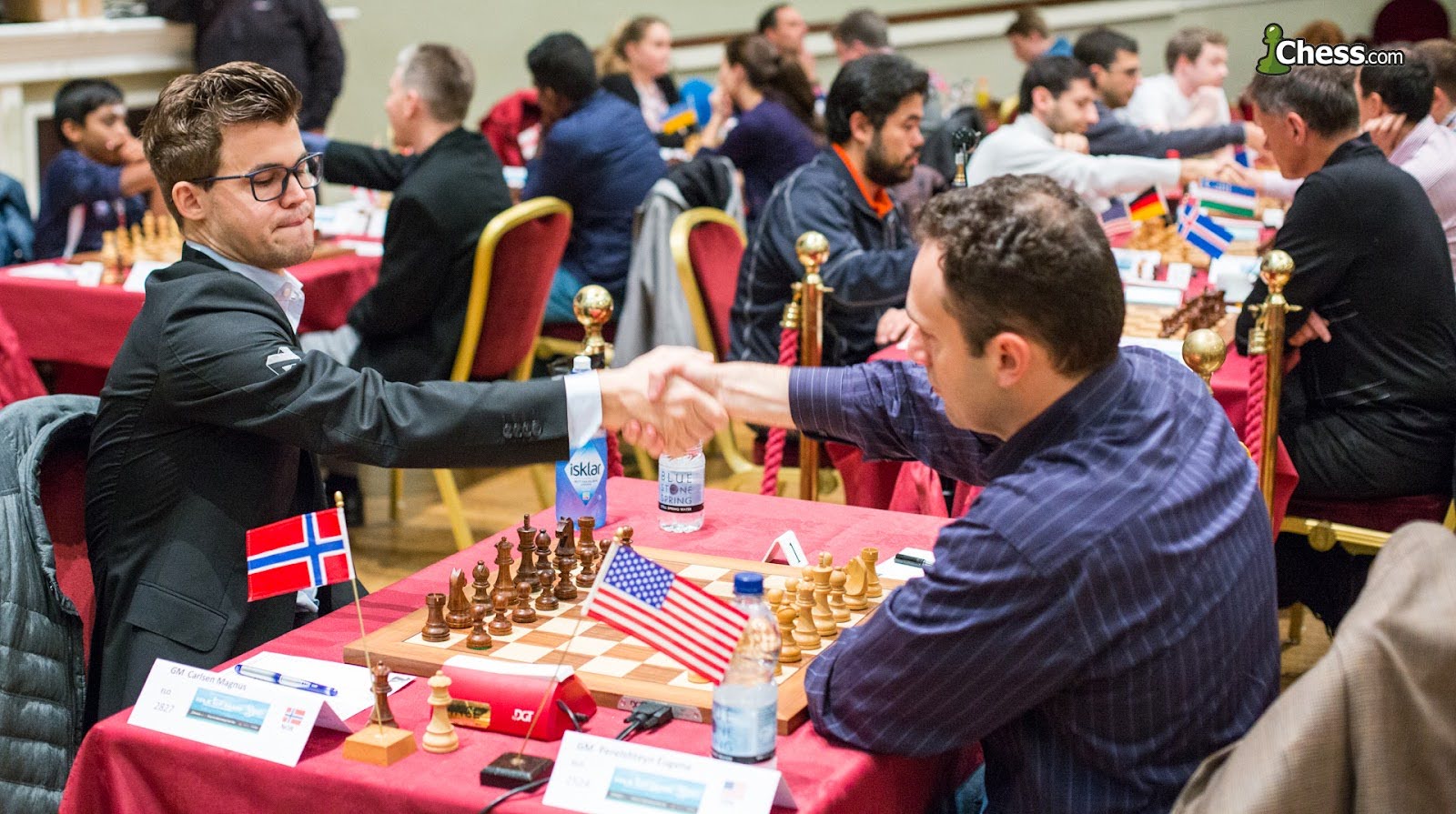
Coach’s Corner: Eugene Perelshteyn
The year was 2017. GM Eugene Perelshteyn was playing in the 2nd round of the Chess.com Isle of Man International Tournament. He was facing Magnus Carlsen, the reigning World Chess Champion. Having prepared a bold, double-pawn sacrifice for one of his students, Perelshteyn found himself in the unique position of putting the same idea into practice against none other than Carlsen himself.
His students were watching the game live and were surprised by their coach’s brave decision to test his prep against Magnus. The Boston-based grandmaster was able to get a big advantage. Although an error made during time pressure allowed Carlsen to trade queens and turn the tables, Perelshteyn’s play in that game convincingly showed he could play with the very best in the world.
Moreover, this story shows that the Ukrainian-American grandmaster is true to himself and has the courage of his convictions - he does not play it safe just because he is playing against the world’s #1. Perelshteyn is confident (with good reason!) in the prep and strategies he shares with his pupils.

Having a coach can really impact a player’s development both over the board and away from it. Perelshteyn knows this as he himself has been a student of prominent coaches and original thinkers. From Roman Dzindzichashvili to Aleksander Wojtkiewicz and from Igor Zaitsev to Iossif Dorfman, working with some of the brightest minds helped Perelshteyn refine his playing style and develop his own methodology of coaching.
Also, some of these trainers became his collaborators in other projects. For instance,Dzindzi and Perelshteyn teamed up with Lev Alburt to publish the best-selling repertoire books Chess Openings for White/Black Explained in 2005.
In his book “Evaluate like a Grandmaster”, co-authored by fellow Chessable author Nate Solon, Eugene beautifully summarizes the experience of working with elite chess coaches: “[It] formed the basis of my understanding of chess. Their wit and simple explanations such as “you just trade the bishops and win on the dark squares,” or “trade queens to enter a winning endgame” cannot be replaced by dry Informant symbols or engine numbers. Often I would ask myself: what would one of them play in a given position? How would they approach this trade? Is it time to attack or do I need to play a few prophylactic moves first?”
Another lasting influence for Eugene has been Dorfman, who worked with Garry Kasparov. “Unlike the intuitive Dzindzi and Wojo, who would immediately know the best move in any position, Dorfman was a scientist. His analysis sessions are best described as a “bulldozer method.” He would examine every candidate move possible: the bad, the good, and the ugly. Why? I think he was trying to get to the bottom of everything, the ultimate truth…”.

The coaching journey of Eugene Perelshteyn started more than 30 years ago, when he was only a teenager. He was helping his father, a professional chess coach, run chess camps. Nowadays, Eugene has many students, ranging from beginners to grandmasters. In this interview, he shares some tips for chess learners:
What is your chess coaching philosophy?
All my lessons are customized to each individual student. I focus on building a strong opening repertoire, based on concepts and understanding. We also focus on chess psychology and time management. I take great pride in taking students from amateur or club level to master-level.
Suppose a player has only 3 hours a week for chess training. How should they spend their time?
It would depend on a player as everyone has individual strengths and weaknesses. For example, some of my students are good at openings and endgames but tend to make tactical mistakes. While others are good at spotting quick tactics, but are too impulsive and make calculation mistakes. So, I would make a customized plan for each person on what to work on.
What is the biggest factor for improvement for players under 1200 (Chess.com)? Under 2000?
For players Under 1200 it’s tactics, tactics, tactics! Most players make silly blunders and don't pay attention to their opponents' threats. I would have them work on Chess.com Puzzles.
Under 2000 players typically don't have a well-defined opening repertoire and may play bad openings. I will encourage them to create an opening repertoire that suits their style. Most of these players have never studied endgames and basic positional concepts like blockade/pawn chains, etc. These are the areas I would focus on.
What is your preferred way to improve at openings? What's the approach to chess openings that you try to teach your students?
My philosophy with openings is you have to understand the concepts first. For example: if my student can explain to me the reason for every opening move until move 5 or 10, this is already huge. Most players just blindly memorize theory, but don't know the reason behind the moves. Once my students understand concepts, I will show them instructive games how to execute the main ideas. Finally, I would recommend them to use Chessable to actually practice the moves.
What is your preferred way to improve at the endgame?
Most people don't like studying endgames as they are "boring" and too dull. However, I like to show my students beautiful endgame studies that illustrate amazing concepts. The studies and games by famous endgame players make endgames fun.
What would you like to add regarding chess coaching or advice for ambitious chess players?
I recommend to all ambitious chess players to create an opening repertoire that suits their style, work on endgame studies and tactics, and don't forget the classics!
Eugene Perelshteyn’s Courses
Opening prep and a deep positional understanding are Perelshteyn’s forte. This shines through in his Chessable courses including Every Gambit Refuted, Lifetime Repertoires: Hyper-Accelerated Dragon, and Grand Prix Attack Reloaded.
Check out Eugene Perelshteyn’s Chessable author page.